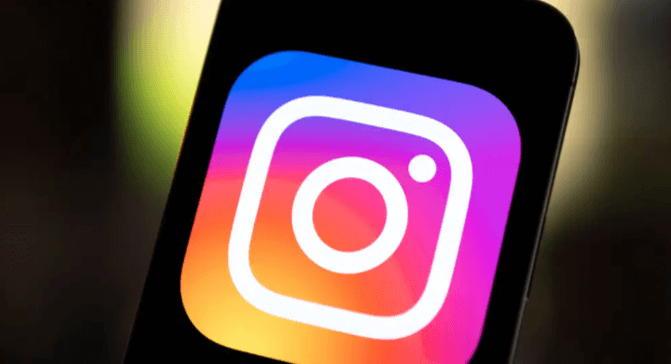The Ultimate Guide to Using Instagram for Small Businesses

Instagram has become one of the most powerful marketing tools for small businesses. With over a billion active users and a highly visual interface, it provides a unique platform for small businesses to connect with their target audience, build brand awareness, and ultimately drive sales. Unlike traditional marketing channels, Instagram offers a more personal and interactive way to engage with potential customers. Whether you’re just starting or looking to refine your Instagram strategy, this guide will walk you through everything you need to know to use Instagram effectively for your small business.
Why Instagram Matters for Small Businesses
As a small business owner, one of the key reasons to use Instagram is its immense reach. Instagram is a platform where users spend a significant amount of time consuming content, which provides businesses with a golden opportunity to get in front of potential customers. More importantly, Instagram’s visual-first format is ideal for showcasing products, services, and brand personality in a way that is engaging and accessible.
Instagram also offers businesses the ability to build trust with customers through authenticity and storytelling. By sharing behind-the-scenes content, customer testimonials, and user-generated content, businesses can create a deeper connection with their audience. The platform’s in-built tools like Instagram Stories, Reels, and Shopping make it easier to convert those engagements into sales.
Setting Up Your Business Instagram Profile
Before you dive into creating content, it’s essential to set up your business Instagram profile correctly. A well-optimized profile not only looks professional but also helps in building credibility and trust with your audience.
Switch to a Business Account
If you haven’t already, the first step is to switch your account to an Instagram Business account. Having a business profile gives you access to additional features such as Instagram Insights, which provides valuable analytics about your followers and post performance. It also allows you to add a contact button to your profile, so customers can easily reach out to you via email or phone.
To switch to a business account, go to your account settings, click on “Account,” and then “Switch to Professional Account.” Select “Business” and follow the steps to complete the process.
Optimize Your Bio
Your Instagram bio is the first thing users see when they visit your profile, so it needs to be clear, concise, and compelling. You have 150 characters to describe your business, so make it count. Focus on what your business does and how it benefits customers.
For example: “Handcrafted organic skincare products 🌱 | Free shipping on orders over $50 📦 | Shop now 👇.”
Make sure to include a link in your bio. This could be a link to your website, product page, or a special promotion. You can also use a tool like Linktree or Later to create a landing page with multiple links, which is particularly useful if you have multiple products or promotions to showcase.
Choose a Professional Profile Picture
For most businesses, your logo will be the best option for your profile picture. Ensure that the image is clear and fits within Instagram’s circular frame. Consistency is key, so use the same profile picture across your other social media platforms to build brand recognition.
Set Your Contact Information
Instagram Business profiles allow you to add contact buttons for email, phone, and directions if you have a physical location. This makes it easy for customers to get in touch with you directly from your Instagram profile, streamlining the communication process.
Develop a Strong Content Strategy
Creating high-quality content is at the heart of a successful Instagram strategy. Your content should not only promote your products or services but also provide value to your followers. To keep your audience engaged, focus on a mix of promotional and non-promotional content, maintaining a balance between selling and building relationships.
Identify Your Target Audience
Before you start posting, it’s important to understand who your target audience is. Knowing your audience helps you create content that resonates with them, increasing your chances of engagement and conversion. Consider factors such as age, gender, location, interests, and purchasing behavior. Use Instagram Insights to gather data about your existing followers, and tailor your content based on their demographics.
Plan Your Content Mix
Your Instagram feed should tell a story about your brand, with each post contributing to the overall narrative. For small businesses, this can include a variety of content types:
- Product Posts: Showcase your products with high-quality images or videos that highlight key features. Use captions to explain how your product solves a problem or improves your customers’ lives.
- Behind-the-Scenes Content: Give followers a peek behind the curtain by showing how your products are made or what goes on in your business day-to-day. This builds authenticity and trust.
- User-Generated Content (UGC): Encourage your customers to share their experiences with your products by reposting UGC. Not only does this serve as social proof, but it also shows that you value your customers.
- Educational Posts: Share tips, tutorials, or industry-related insights that align with your brand. For example, if you run a bakery, you might post tips on how to bake the perfect cake at home.
Use a Content Calendar
Consistency is crucial on Instagram, so using a content calendar can help you stay organized and ensure you’re posting regularly. Plan your posts at least a week or two in advance, and use tools like Later, Hootsuite, or Buffer to schedule them.
By planning ahead, you’ll have a clear overview of your content and can maintain a consistent theme and posting frequency. Aim to post at least 3-5 times a week, but the exact number depends on your resources and the nature of your business.
Leverage Instagram Stories and Reels
Instagram Stories and Reels are powerful tools for boosting engagement and reaching new audiences. Both formats provide a more dynamic and casual way to connect with your followers.
Instagram Stories
Instagram Stories allow you to post content that disappears after 24 hours, which makes them perfect for sharing time-sensitive information like promotions, events, or flash sales. You can also use Stories to show behind-the-scenes moments, introduce new products, or conduct Q&A sessions. Features like polls, questions, and stickers make Stories interactive, encouraging your audience to engage with your content.
Don’t forget to save your best Stories to your Highlights, which are permanently displayed on your profile. Organize your Highlights by category, such as “Products,” “Customer Reviews,” or “About Us,” to make it easier for visitors to find the content they’re interested in.
Instagram Reels
Instagram Reels are short, engaging videos that can go viral and reach users beyond your current followers. They’re a great way to showcase product tutorials, share customer testimonials, or highlight fun aspects of your business. Reels can increase your visibility because Instagram’s algorithm favors video content, especially Reels.
To get the most out of Reels, focus on creating visually appealing, concise, and informative videos. You don’t need professional equipment; a smartphone and a creative idea are often enough to make a compelling Reel. Since Reels are displayed in their own section on Instagram, they offer a significant opportunity for growth and engagement.
Use Hashtags Strategically
Hashtags are essential for improving the discoverability of your content. When used effectively, hashtags can help your posts appear in search results and be seen by people who don’t follow your account yet.
Research Relevant Hashtags
Start by researching hashtags that are popular within your industry and relevant to your target audience. You can use tools like Hashtagify, All Hashtag, or Instagram’s search function to find popular and trending hashtags. Don’t just rely on overly popular hashtags like #love or #instagood, as your content might get lost in the crowd. Instead, focus on a mix of broader hashtags (like #smallbusiness or #handmade) and more niche-specific hashtags that cater to your audience.
Create a Branded Hashtag
In addition to using popular hashtags, create a branded hashtag that is unique to your business. This could be your business name or a catchy slogan that represents your brand. Encourage your customers to use this hashtag when they post about your products. A branded hashtag helps build a community around your brand and makes it easier for you to find and share user-generated content.
Instagram allows up to 30 hashtags per post, but you don’t necessarily need to use all 30. A well-thought-out selection of 10–15 hashtags can be just as effective.
Engage with Your Audience
Engagement is key to building a loyal following and increasing your visibility on Instagram. Responding to comments, liking posts, and interacting with your followers makes them feel valued and creates a sense of community around your brand.
Respond to Comments and Messages
Whenever someone comments on your posts or sends you a direct message, take the time to respond. Even a simple “thank you” can go a long way in making your followers feel appreciated. Engaging with your audience helps build trust and encourages others to engage with your content as well.
Engage with Other Accounts
Don’t just wait for people to engage with you—be proactive. Like, comment on, and share posts from other businesses, influencers, and customers in your niche. This helps increase your visibility within your community and encourages others to check out your profile. You can also collaborate with influencers or complementary businesses to reach a broader audience.
Run Instagram Ads
While organic growth is valuable, Instagram Ads can help you accelerate your reach, especially when you’re just starting out or promoting a new product. Instagram’s ad platform is part of Facebook’s Ads Manager, which allows you to target specific audiences based on demographics, interests, and behavior.
Types of Instagram Ads
There are several types of Instagram ads that small businesses can leverage:
- Photo Ads: Standard image ads that appear in users’ feeds. They’re great for showcasing products or promotions.
- Video Ads: Use video ads to provide more in-depth information about your products or share customer testimonials.
- Carousel Ads: These allow users to swipe through multiple images or videos in a single ad. They’re ideal for showcasing a range of products or telling a story.
- Story Ads: Full-screen ads that appear between users’ Stories. They’re a highly engaging format perfect for limited-time promotions or announcements.
By running targeted ads, you can reach new potential customers, drive traffic to your website, and increase sales.
Track Your Performance with Instagram Insights
To ensure your Instagram strategy is effective, it’s essential to track your performance regularly. Instagram Insights provides valuable data on how your posts and Stories are performing, who your audience is, and how they’re interacting with your content.
Key Metrics to Monitor
- Follower Growth: Track how your follower count changes over time and after specific posts or campaigns.
- Engagement Rate: Measure the number of likes, comments, shares, and saves your posts receive. A high engagement rate indicates that your content resonates with your audience.
- Reach and Impressions: These metrics tell you how many people are seeing your posts and how often they’re being viewed.
- Website Clicks: If your goal is to drive traffic to your website, monitor the number of clicks your bio link receives.
By regularly reviewing your performance, you can refine your content strategy, focus on what works, and improve areas that may need attention.
Conclusion
Instagram offers immense potential for small businesses looking to grow their brand, engage with customers, and drive sales. By setting up a professional profile, developing a strong content strategy, engaging with your audience, and leveraging Instagram’s tools like Stories, Reels, and Ads, you can turn Instagram into a powerful marketing platform for your business. The key to success is consistency, authenticity, and a willingness to experiment and learn from your audience’s feedback.






